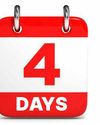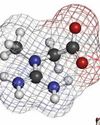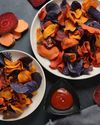
As a physiotherapist, I often encounter patients who suffer from chronic muscle pain due to overuse, such as athletes or individuals with physically demanding jobs. Take, for instance, a patient of mine who was struggling with persistent knee pain from repetitive strain. Our traditional soft tissue release techniques, while effective, are sometimes painful for the patient to endure.
This is where dry needling came in. It is a less painful yet highly effective alternative that provides quick relief by targeting the specific trigger points causing the discomfort.
Dry Needling is a therapeutic technique now widely practised by a range of healthcare professionals, including medical doctors, dentists, physiotherapists, veterinarians, and others who have undergone specific training. The discovery and development of dry needling as a distinct practice in Western medicine occurred much later than Traditional Chinese Medicine (TCM) acupuncture, but it has rapidly gained traction due to its effectiveness in treating various musculoskeletal conditions.
ORIGINS OF DRY NEEDLING
The origins of dry needling can be traced back to the use of injections of anaesthetic to treat painful musculoskeletal conditions. As early as the 1930s, practitioners began injecting irritated points in the muscles to alleviate pain. However, a significant turning point in the development of dry needling came in 1941 when a groundbreaking paper was published in the US. The research claimed that pain could be relieved by simple needling without the injection of any substance, which laid the foundation for the technique we know today.
この記事は PRIME Singapore の October - November 2024 版に掲載されています。
7 日間の Magzter GOLD 無料トライアルを開始して、何千もの厳選されたプレミアム ストーリー、9,000 以上の雑誌や新聞にアクセスしてください。
すでに購読者です ? サインイン
この記事は PRIME Singapore の October - November 2024 版に掲載されています。
7 日間の Magzter GOLD 無料トライアルを開始して、何千もの厳選されたプレミアム ストーリー、9,000 以上の雑誌や新聞にアクセスしてください。
すでに購読者です? サインイン

Ceasing the Suffering
Discover Long-Standing Relief from Chronic Pains Without Surgery. (No, It is Not TCM!)

Tackling A New Job
Navigating Mid-Career Change: Effective Resume Writing Tips

Fight Off Fatigue
Chronic Fatigue: Is Hormonal Disharmony Draining Your Energy?

Are You Inflamm-Ageing?
How Your Favourite Festive Foods Are Secretly Causing Inflammation and Ageing You Faster

Lesser. Better.
The Advent of the Four-Day Workweek

Allied in Health
The Healthy Melody Seminar Experience - Sharing the Journey

CREATINE
The Compound That Drives Your Muscles and Health

Crispy Crunchy Chewy Temptations
A Guide to Healthy Festive Snacking - Part 2

A Hiro's Welcome
Veteran Japanese Star Hiroyuki Sanada Finally Rises to the Top of Hollywood with Shōgun

Mercury Rising
Understanding the Impact of Heatwaves on Health